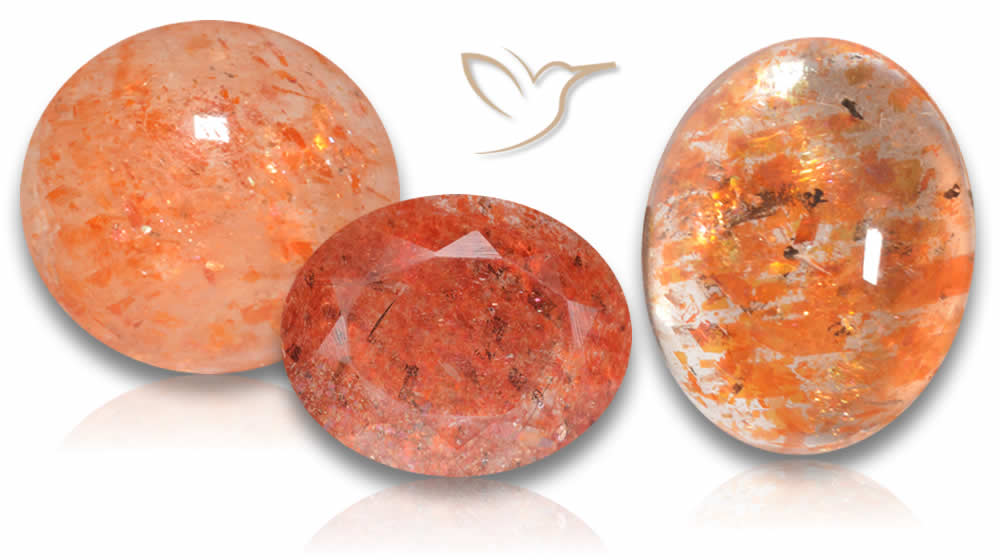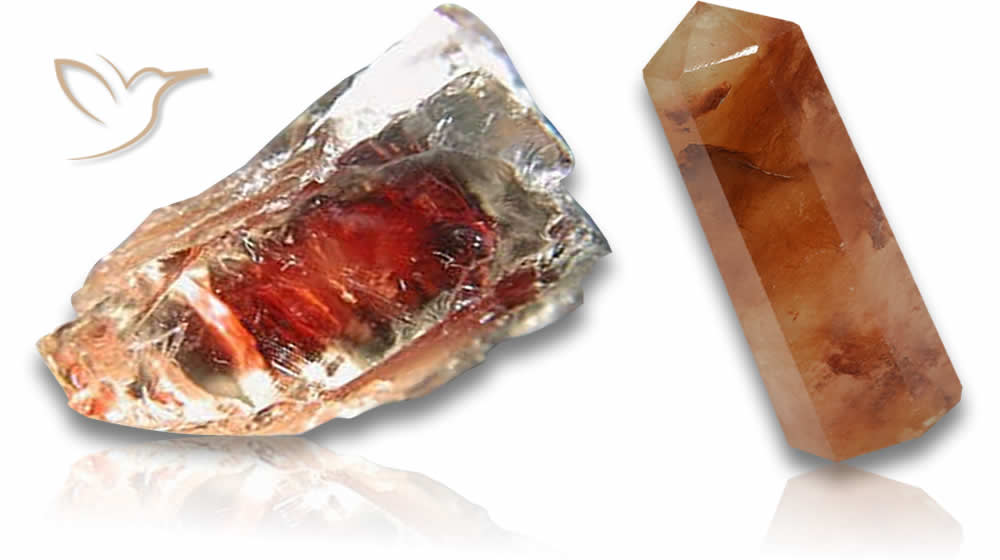Exploring the Fascinating History of Sunstone

Welcome to our exciting journey into the history of sunstone, a unique gemstone with a significant cultural and historical legacy. In this section, we will explore the origins of sunstone, its role in ancient cultures, and its journey through different historical periods. We'll also delve into sunstone's contemporary significance, including its metaphysical properties, benefits, and presence in modern culture. Join us as we unravel the rich past of this radiant gemstone.
Key Takeaways:
- Sunstone has a fascinating history with significant cultural and historical value.
- Sunstone's origins are rooted in geological processes that created this unique gemstone.
- The gemstone was revered by ancient cultures, with symbolic meanings attached to it.
- Sunstone has transitioned into modern times and is used for its properties and benefits, including in alternative healing practices.
- Sunstone continues to be valued and appreciated in contemporary culture, highlighting its enduring allure and significance.
The Origins of Sunstone
The enchanting sunstone gemstone is a product of geological processes that spanned millions of years. It is a type of feldspar mineral that has thin plate-like inclusions, which reflect light to produce a glimmering effect. Sunstone is commonly found in Norway, Madagascar, India, Russia, and the United States.
The formation of sunstone involves various geological conditions, including magma rising from deep within the earth's crust, followed by cooling and solidification. The inclusions in sunstone are caused by the diffusion of metal and other minerals, leading to their extensive presence within the stone. The unique geological processes involved in sunstone's formation contribute to its rare and highly sought-after characteristics.
Sunstone has a rich history, with evidence of its use dating back thousands of years. Ancient cultures valued this remarkable gemstone for its beauty and perceived mystical properties. Its discovery and use throughout history remain a testament to its enduring allure and significance.
Sunstone in Ancient Cultures
As we continue our exploration of the fascinating history of sunstone, we look into the ancient cultures that revered this radiant gemstone. Sunstone was considered a sacred stone in many cultures and was believed to hold significant spiritual and metaphysical properties.
One of the most notable meanings attached to sunstone was its association with the sun. In ancient Greece, sunstone was said to embody the power and energy of the sun god, Helios. The Vikings, on the other hand, believed that sunstone represented the sun itself and used it for navigation on the high seas, holding the gemstone up to the light to determine the position of the sun.
Sunstone was also used in religious and spiritual ceremonies. Native American cultures believed that sunstone brought abundance and good luck, and the stone was used in healing rituals to cleanse the spirit and promote well-being. In Hinduism, sunstone was associated with the solar plexus chakra, which governs personal power and confidence.
| Symbolic Meanings of Sunstone in Ancient Cultures | Sunstone Properties | Sunstone Folklore |
|---|---|---|
| Sun | Brings joy and happiness; enhances vitality and personal power | The Vikings used sunstone to navigate on the high seas |
| Abundance | Attracts abundance and good luck; promotes financial success | Native Americans used sunstone in healing rituals to bring good fortune |
| Positivity | Encourages a positive outlook; promotes feelings of optimism and confidence | In Hinduism, sunstone was associated with the solar plexus chakra, which governs personal power and confidence |
The symbolic meanings and properties attributed to sunstone in ancient cultures have made it a sought-after gemstone to this day. In the next section, we'll explore how sunstone has evolved through the ages, taking on different roles and significance in art, jewelry, and trade.
Sunstone Through the Ages
Throughout history, sunstone has played an important role in art, jewelry, and trade.
During ancient times, sunstone was revered by the Vikings. In fact, the Vikings believed that sunstone could be used as a navigational tool, allowing them to locate the sun on cloudy days, which helped them to navigate the treacherous seas.

Sunstone has been found in various ancient artifacts, including burial mounds and royal tombs. The gemstone was also used as a prominent decorative feature on many medieval buildings, including churches and cathedrals.
During the Renaissance, sunstone became a popular addition to jewelry designs. Many jewelers took advantage of the gemstone's unique qualities, specifically its ability to refract light, which gave it a distinctive appearance.
| Time Period | Significance of Sunstone |
|---|---|
| Ancient Times | Used as a navigational tool by the Vikings, found in burial mounds, and featured on medieval buildings |
| Renaissance | Added to jewelry designs for its unique appearance and light-refracting qualities |
| Modern Times | Remains a popular gemstone in contemporary jewelry and is sought-after for its healing properties |
Sunstone's popularity has continued to this day, as it remains a highly sought-after gemstone for its unique beauty and healing properties.
Today, sunstone is used in various jewelry designs, including necklaces, bracelets, and earrings. It is also highly popular in alternative healing practices, with many people believing that it possesses numerous healing qualities.
From the Vikings to modern times, sunstone has had a remarkable journey, gaining significant cultural and historical value along the way.
Sunstone in Modern Times
As sunstone becomes an increasingly popular gemstone, it has found its way into modern designs. Its unique properties and beauty make it a sought-after addition to fashion and jewelry pieces.
One notable feature of sunstone is its use in alternative healing practices. It is believed to have a range of benefits, including promoting vitality, self-esteem, and inspiration. Some practitioners also recommend sunstone for boosting metabolism and treating seasonal affective disorder (SAD).
Moreover, sunstone's radiant appearance and warm tones make it a popular choice for jewelry design. It often appears in statement pieces such as pendants and bracelets, as well as in more understated earrings and rings. Its unique texture and color also make it a favorite of wire-wrapping artists and other crafters who seek to showcase its natural beauty.
| Properties | Benefits |
|---|---|
| Enhances creativity and motivation | Promotes inspiration and self-expression |
| Reduces stress and anxiety | Boosts confidence and positivity |
| Improves digestion and metabolism | Alleviates SAD symptoms |
Overall, whether it is for its healing properties or its stunning aesthetics, sunstone continues to captivate and inspire people around the world.
Sunstone's Metaphysical Properties
Sunstone is a powerful gemstone that is strongly associated with creativity, confidence, and positive energy. Its metaphysical properties have long been recognized and used in holistic practices.
Enhancing Creativity
One of the most well-known metaphysical properties of sunstone is its ability to enhance creativity. It is believed to stimulate the sacral chakra, which is associated with creativity and sexual energy, and thus help to generate new ideas and inspiration.
"Sunstone is one of the best stones for enhancing creativity and providing fresh energy and inspiration."
Boosting Confidence
Sunstone is also thought to boost confidence and self-esteem. It is said to provide mental clarity, helping to dispel self-doubt and negative thinking patterns, and promoting a more positive outlook on life.
"Sunstone is a powerful stone for helping one regain faith in oneself."
Promoting Positivity
Another important metaphysical property of sunstone is its ability to promote positivity. It is said to be an excellent stone for overcoming stress and anxiety, and for promoting a sense of joy and well-being. It is also believed to help bring good luck and abundance into one's life.
"Sunstone has a powerful positive energy that can help to lift one's spirits and promote feelings of happiness and well-being."
Sunstone's Cultural Significance Today
As we continue to explore the fascinating history of sunstone, it's clear that this gemstone's allure and significance persist to this day. Sunstone is not only appreciated for its beauty but also for its various properties and meanings.
In popular culture, sunstone has made appearances in films, TV shows, and literature, adding to its mystique and appeal. It has also become a sought-after gemstone in fashion, with designers incorporating its warm, golden hues into stunning pieces of jewelry.
Furthermore, sunstone's popularity in the gemstone market has remained steady, with gem enthusiasts and collectors seeking out high-quality sunstone specimens. Its unique properties, such as its ability to reflect light in a phenomenon known as aventurescence, continue to fascinate those in the gem and mineral community.
Overall, sunstone's cultural significance in contemporary times is a testament to its enduring beauty, symbolism, and properties. Its place in popular culture, fashion, and the gemstone world is a fitting tribute to a gemstone with such a rich and captivating history.
Conclusion
As we conclude our exploration of the history of sunstone, we can see how this gemstone has captivated humanity for centuries. From its ancient origins to its contemporary uses, sunstone continues to hold cultural and historical significance that makes it a cherished gemstone today.
The unique geological processes that created sunstone have given it distinctive properties that have fascinated people across time. Its symbolic meanings and spiritual significance have been recognized by cultures worldwide, making it a significant part of many rituals, ceremonies, and artistic expressions.
In modern times, sunstone has continued to be valued in the gemstone market and is popular for its physical and metaphysical properties. Its use in alternative healing practices has grown in popularity, and it is a popular choice for those seeking to enhance their creativity, confidence, and positivity.
As we look back at the history of sunstone, we can see how it has transitioned through different historical periods, impacted art and jewelry, and continues to be valued today. Its history and cultural significance continue to make it a fascinating gemstone, and we look forward to seeing how it evolves in the future.
FAQ
What is the history of sunstone?
Sunstone has a fascinating history that dates back centuries. It was first discovered in ancient cultures, where it held significant cultural and spiritual meaning. Over the ages, it has evolved and continues to be valued for its radiant beauty and unique properties.
Where does sunstone come from?
Sunstone is known for its origins in various regions around the world. It is primarily found in countries such as Norway, India, Russia, and the United States. These regions have geological formations that contribute to the creation of sunstone.
What is the meaning and folklore behind sunstone?
Sunstone holds symbolic meanings in different ancient cultures. It is traditionally associated with the sun and carries associations of light, warmth, and vitality. It has been revered for its energizing and empowering properties, often used in rituals and ceremonies.
How has sunstone been used throughout history?
Sunstone has played various roles throughout history. It has been used in art, jewelry, and even as a form of currency. Its vibrant colors, captivating shimmer, and unique properties have made it a sought-after gemstone throughout the ages.
How is sunstone used in modern times?
Sunstone is still highly regarded in modern times. It is used in jewelry design, where its warm, golden hues add a touch of radiance to any piece. Additionally, it is sought after for its properties, many believing it possesses healing and metaphysical benefits.
What are the metaphysical properties of sunstone?
Sunstone is believed to enhance creativity, boost confidence, and promote positivity. It is associated with stimulating personal power and the Sacral Chakra. Many individuals turn to sunstone for its energetic and spiritual properties.
How is sunstone culturally significant today?
Sunstone maintains cultural significance in various ways. It is often seen in popular culture, featured in fashion trends, and admired for its beauty. It continues to captivate individuals and holds its place in the gemstone market.

